#spirituallife
Text

Card of the Moment: 6 of Cups
Card of the Moment: 6 of Cups. If you listen in the quiet moments, you will hear the ancestors calling you back to the time of strength and power, when life was good and simple, and the universe was your friend. Let yourself reach back to the times of power.
2 notes
·
View notes
Text
Transcendence of Enshrined Form and the Grave of Initiation
It’s always interesting to me when folks show surprise (or, occasionally, utter shock) at my speaking in terms that point through the transitory nature of religious convention. Recently this arose with a new student, and I subsequently reflected on it in light of my solemn monastic profession. For those who are unfamiliar with that rite in Catholic Christian tradition, it is the final vows that monastics make, often referred to as ‘life vows’. A universal and prominent component of this rite is a ceremonial death-and-burial, in which the candidate for solemn vows lies in full prostration on the ground, is completely covered with a large black funerary shroud and left there for a portion of the ceremony, while the Liturgy goes on without him or her.
In my own experience of this, one of my monastic students, Br. Aidan, placed a traditional Scottish tartan over my body, symbolizing my ancestral inheritance; then an old Eastern Orthodox funeral shroud printed with an icon of the crucifixion (very similar to what is depicted on the ‘Great Schema’ of some Orthodox monastic Elders), which was gifted to me and our community years ago by a dear former seminary professor; and finally the black funeral shroud. Those first two layers were dearly held things that were in one sense an integral part of my ritual death, but at the same time things that, because they were so dearly held, I knew I also had to die to in that process. The essential symbolism of this act of ritual burial is that the monastic is finally, sacramentally, then and there, once and for all, dying to the phenomenal world and to every other possible path of experience that would otherwise be open to him or her in this lifetime.
In my understanding,—and I’m confident this reflects the understanding of the ancient tradition, too—the fully vowed monastic is, if nothing else, one who is fully immersed in the process of dying absolutely to the false construct of ‘self’, as well as to every phenomenal, worldly attachment, in order to enter non-dual union with the Divine Ground. Obviously, undergoing the symbolic sacramental rituals of a rite like Solemn Profession does not magically make it so—: they don’t suddenly bring one to full awakening in non-dual awareness; rather, the outward dimensions of the rite further the depth of the process toward awakening that has been unfolding throughout many years of previous formation, ascetical and contemplative practice. They also ‘energetically’ close doors that might otherwise have remained open, narrowing one’s focus even further on the authentic aim of the monastic (and, in this case, the contemplative) life.
When I was ordained a Buddhist monk in 2003, the same essential feeling was impressed upon me: a ‘dying’ in pursuit of total freedom by means of renunciation—: real renunciation, which is not a rejection of anything, but a seeing through all things, and a releasing of one’s delusional grasping at phenomena. This is a recurring theme of what might be called the ‘perennial wisdom tradition’.
Fully entering a life of renunciation means inwardly dying to all concepts—about anything and everything, including God, metaphysical dogmas, and all the other elements of cultural-religious convention. Why? Because one has discovered (or must come to discover), in dying to ‘self’ and all phenomena, that all such things are contrivances of the human mind, cultural constructs, and they are not God, or even adequate representations of the ineffable Mystery we point to with that term. As St. Eckhart reminds us, we will have to eventually die to God as well—that is, to all our concepts about God—since we know for certain that nothing we can say about that eternal Mystery is actually true, and no image, idea, belief, or conditioned experience can truly reflect it. (This is also beautifully laid out in St. Dionysius’s treatise, Mystical Theology.) Hence, the jñāna yogīs of Vedāntic tradition commit to perpetually cutting through all thoughts and appearances with the sword of discernment, saying with everything: neti, neti: ‘not this, not this’. Nothing that’s created or conditioned can be the Mystery we’re seeking.
One who has gone down to the grave and touched the depths of self-surrender has effectively died to everything. There’s no holding certain things back or choosing ‘favorite pets’ as exceptions to the rule; that would only mean more attachments and thus more distractions from what is ultimate, from what ancient Hermetists sometimes called the One Thing. This invokes for me a motif found frequently in the sayings of the Desert Mothers and Fathers about not keeping back even a little bit of money in one’s cell as a ‘safety net’. Holding on even to one little thing is not full surrender. (In the present context, the monetary dimension of the motif is metaphorical, of course, pointing to the holding back of certain select attachments, favored ideational constructs, beliefs: whatever we want to continue to imagine can give us ‘security’.) That kind of subtle, devious jockeying against the authentic aim of illumination or awakening only reifies the false duality of the state of delusion and needless suffering—what Hindus and Buddhists call samsāra. Therefore, nothing can be carried over into contemplative life from the life of attachment to phenomena: no contrivance of mind, nothing framed by human thought. And this unequivocally includes even the most ‘sacred’ thoughts and personally prized religious ideations, which are, at the end of the day, still just made of thought—and thought itself isn’t made of anything at all.
There should be no surprise, then, when those of us who have thusly died—not just ceremonially, but in actuality, in the way we live and speak—teach or otherwise express ourselves in language and behavior that reflects the fact of that kenosis. A perennial hope of monasticism in the great religious traditions—and of many non-monastic schools of mystical training as well—is that the sharing of the fruits of this emptying would be for others not a source of fear and unwelcome destabilization, but rather an inspiring witness, to help in some small way in the universal project of apokatástasis, or, in Buddhist terms, bringing all sentient beings to enlightenment, to realization of their own true nature. Without the compassionate intention to create the conditions where that might be so, probably none of us would bother to teach or even remain much in contact with ‘the world’ at all.
Those who say ‘yes’ to this path of emptying—which is to say, legitimate contemplatives of any variety—will have to progressively shed more and more attachments, until finally nothing remains but that which was never created and never dies, cannot be spoken, and cannot be thought.
So, my friends, a humble invitation: Don’t be shocked by speech or actions from such persons that doesn’t conform to the normative, mainline doctrine of the particular religious context(s) in which they happen to presently reside. Moving beyond those constraints is an expected and hoped for stage of the path toward perfect freedom. There is a golden thread of wisdom running through many of the world’s religious traditions, the essence of which is transcendent of each and all of those traditions. This may be new information for you, and it may threaten some of your dearly held assumptions about reality—and that’s okay. I would simply encourage you to sit with that, explore it further, and be open, rather than rigidify and resist. And it’s sometimes useful also to recall that, whether we want to acknowledge it or not, all of the things we hold most dear are constantly moving, rapidly changing, conditional, and always provisional. This includes, of course, all the culturally constructed artifices of religion we like to imagine are somehow trans-human, magically pure and unaffected by the conditioned vicissitudes of phenomenal existence.
Once upon a time I had a Pāli saying of the Buddha, rendered in Devanāgarī, tattooed on my arm—well, technically I still do, but because the lettering had been put on too small (I was young and didn’t yet know enough about tattooing), it now lives underneath a Pictish motif. This saying is still very significant for me, and I think of it often. It translates roughly to: ‘All conditioned things are impermanent, subject to rise and fall. Once they arise, they must cease. And their stilling is bliss.’ I think that just about summarizes the situation perfectly.
Along the way, provisional reality must have its day, of course, and it must be embraced to the extent that it helps us (somewhat paradoxically) to eventually let go of it. In the realm of the relative, we still need to strive for the goal, we still need self-discipline, we have to have some structure or pattern of life, we need some legitimate wisdom teachings to follow, and, above all, we must practice. But we do well, firstly, to adopt those provisional forms that actually help us rather than hinder us by weighing us down with needless, extraneous dogmas or unhelpful thought-forms; and, secondly, whatever we do embrace and utilize, we do well to simultaneously know it as utterly transparent and ephemeral. Not this, not this…
And if in your travels you happen to hear something that has in it the harmonious notes of wisdom, but challenges your beliefs and assumptions, I encourage you to listen—to listen with the ear of the heart.
Fr. Brendan+ (Ngakpa Palden Dorje)
#fatherbrendan#brendanelliswilliams#spirituality#spiritualjourney#spirituallife#spiritualawakening#awakening#nonduality#theology#mysticism#christianmysticism#buddhism#interfaith#Interreligious#priest#monastic#monasticism#initiation#spiritualdirector#teacher#author#spiritualdirection#perennialwisdom#Insight#inspiration#depth#religiousstudies#kenosis#contemplative#contemplation
6 notes
·
View notes
Photo
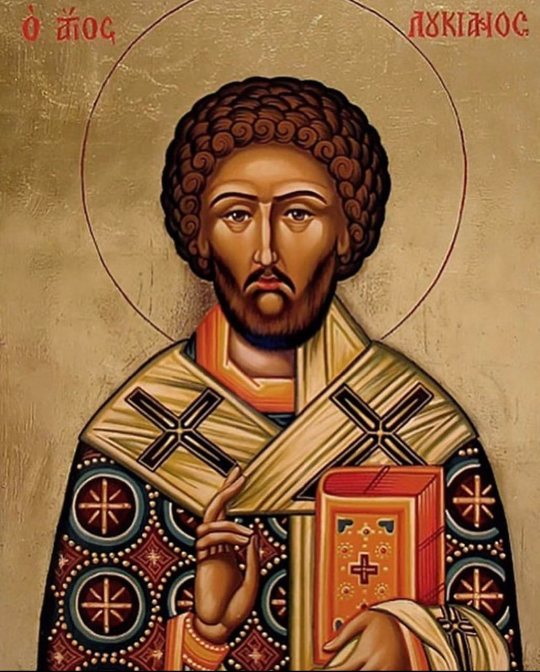
Today we celebrate the martyrdom of the Hieromartyr Lucian of Antioch. Saint Lucian was orphaned at the age of 12 and so he distributed all his possessions to the poor and sought guidance from the confessor Macarius in Edessa. Here he learnt the scriptures and the ascetic life. Having excelled in virtue and preached the gospel to the Jews and pagans, he was ordained a presbyter (priest). He opened a school in Antioch which taught the Holy Scriptures and how to live a virtuous life. He even corrected mistranslations and heretical additions to the Greek Septuagint. During the persecution of Diocletian, Saint Lucian was taken prisoner for 9 years where he encouraged his fellow prisoners not to give up the good fight. Just before his death, the holy presbyter wished to receive communion for the last time, and so, bound to a spiked bed in chains and shackles, he performed the Divine Liturgy in the prison, using his own chest as the Holy Altar. The day after when the soldiers went to see if the Saint was alive, he confessed three times, "I am a Christian" and then his soul departed to the Lord. The soldiers threw his body into the sea, however two dolphins miraculously brought it ashore where a pious Christian took the body and buried it. The Honourable Saint Helen built a church over where his relics were buried. May he intercede for us all + #saint #lucian #presbyter #antioch #antiochian #lebanon #martyr #hieromartyr #confessor #ascetic #asceticism #virtue #spirituallife #spiritual #septuagint #prayer #holy #venerable #helen #sainthelen #sthelen #dolphin #dolphins #miracle #miraculous #communion #holycommunion #martyr #martyrdom #orthodox #saintoftheday (at İzmit-Kocaeli) https://www.instagram.com/p/CjtO0XUL6wd/?igshid=NGJjMDIxMWI=
#saint#lucian#presbyter#antioch#antiochian#lebanon#martyr#hieromartyr#confessor#ascetic#asceticism#virtue#spirituallife#spiritual#septuagint#prayer#holy#venerable#helen#sainthelen#sthelen#dolphin#dolphins#miracle#miraculous#communion#holycommunion#martyrdom#orthodox#saintoftheday
10 notes
·
View notes
Photo

"The one thing necessary is a true interior and spiritual life, true growth, on my own, in depth, in a new direction. Whatever new direction God opens up for me. My job is to press forward, to grow interiorly, to pray, to break away from attachments and to defy fears, to grow in faith, which has its own solitude, to seek an entirely new perspective and new dimension in my life. To open up new horizons at any cost. To desire this and let the Holy Spirit take care of the rest. But really to desire this and work for it."
Quote by Thomas Merton
2 notes
·
View notes
Photo

#spiritual #spirituality #spiritualawakening #spiritualgrowth #SpiritualJourney #spiritualgangster #spiritualquotes #spiritualhealing #SpiritualWarfare #spiritualcoach #spiritualpath #spiritually #spiritualit #spiritualart #spiritualwarrior #spiritualism #spiritualist #spiritualguidance #spiritualLife #spiritualteacher #spiritualbeing #spiritualthoughts #spiritualjewelry #spiritualbeings #spiritualpractice #spiritualhealth #spiritualjunkie #spiritualdevelopment #spiritualentrepreneur #spiritualrevolution (at Homestead, Miami. FL) https://www.instagram.com/p/Civ-8nKsGmO/?igshid=NGJjMDIxMWI=
#spiritual#spirituality#spiritualawakening#spiritualgrowth#spiritualjourney#spiritualgangster#spiritualquotes#spiritualhealing#spiritualwarfare#spiritualcoach#spiritualpath#spiritually#spiritualit#spiritualart#spiritualwarrior#spiritualism#spiritualist#spiritualguidance#spirituallife#spiritualteacher#spiritualbeing#spiritualthoughts#spiritualjewelry#spiritualbeings#spiritualpractice#spiritualhealth#spiritualjunkie#spiritualdevelopment#spiritualentrepreneur#spiritualrevolution
2 notes
·
View notes
Text
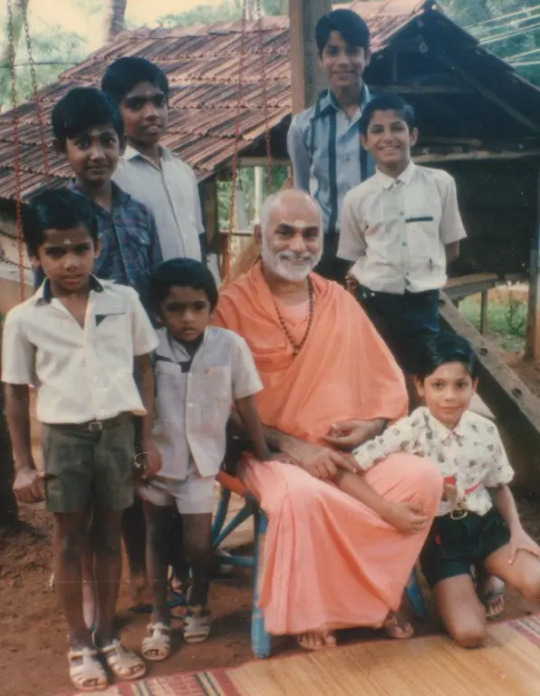
Sensory restraint constitutes the essence of spiritual saadhana. Sthita-prajña, whom Bhagavadgeeta presents as the model Self-knower, is one who excels in sensory restraint and sublimation. Senses are no doubt indispensable to live in the world. But they should be sublimated and employed discreetly. To indulge in unrestrained sense-pleasures will be disastrous to the spiritual life of the seeker – nay, to anybody.
Swami Bhoomananda Tirtha
#bhoomananda#globalsatsang#swamibhoomanandatirtha#narayanashramatapovanam#bhoomanandafoundation#poojyaswamiji#Bhagavadgeeta#spiritualsaadhana#Sthitaprajna#spirituallife#spirituality#spiritualquotes
0 notes
Link
In this episode of The Dynamic Duo, Dr. Ronda Chervin and Dr. Cynthia Toolin-Wilson continue their discussion on their latest book project.
0 notes
Text

For Vietnamese and Chinese versions, please check out:
https://ngocnga.net/spiritual-life/?utm_source=tumblr&utm_medium=social&utm_campaign=quote
🖼📚😅
Someone who trusts literature and art often has something naive in their bones which makes them impractical, unable to adapt to life, not mature or social enough, and not easily happy. - Li Ge, "Is spiritual life despicable?"
//
Yīgè xìnrèn wényì de rén, gǔzilǐ wǎngwǎng yǒu tiānzhēn de dōngxī, zhège dōngxī, ràng tāmen bù wùshí, bù shìyìng shēnghuó, bùgòu yuánshú, héqún, yě bù róngyì kuàilè qǐlái.-Lí Gē “Jīngshén shēnghuó shì kěbǐ de ma”
#1quotein3languages#chineselanguage#learnchinese#learnmandarin#studychinese#chinesewords#putonghua#weibo#chinese#mandarin#pinyin#quotes#quote#ArtisticSoul#SpiritualLife
1 note
·
View note
Text
Rice Eyes Enlightenment in Dogens Kitchen by Tai Sheridan


Rice Eyes Enlightenment in Dogens Kitchen
Rice Eyes Enlightenment in Dogens Kitchen by Tai Sheridan is a poetic presentation of Dogen's essay Tenzo Kyokun, Instructions to the Cook, by Zen Priest and Poet Tai Sheridan. 'Rice Eyes' is a metaphor for the non-dual world, the essential Buddhist experience of oneness. Dogen uses the role of Tenzo, or head cook, to demonstrate how to live, work, and experience a spiritual life that brings benefit to everyone.
From the book:
Dogen lived from 1200 to 1253. He was the founder of the Soto lineage of Zen in Japan, a school of Zen now firmly rooted in America and the West. His seminal essay, Instructions to the Cook (Tenzo Kyokun), is an important treatise on living an aware and joyful life while engaged in daily activities. 'Rice Eyes' is a metaphor for the non-dual world, the essential Buddhist experience of oneness. Dogen uses the role of Tenzo, or head cook, to demonstrate how to live, work, and experience a joyful spiritual life that brings benefit to everyone. I have called the head cook the 'Chef de Cuisine' so that the poem addresses everyone, not just monastic Zen chefs. I have transformed Dogen's essay from prose into poetry, and have created subdivisions by topic that clarify his writing. I have also replaced his thirteenth century idioms with contemporary language and images to make his ideas more easily understood.
Download it here:

Rice Eyes Enlightenment in Dogens Kitchen
What is the book Tenzo Kyokun about?
"Tenzo Kyokun," also known as "Instructions for the Cook," is a classic Zen Buddhist text written by the 13th-century Japanese Zen master Eihei Dogen, the founder of the Soto school of Zen Buddhism. The text is not just a set of instructions for the monastery cook (tenzo), but it is also a profound teaching on how to live a mindful and enlightened life.
One of the most striking aspects of "Tenzo Kyokun" is its emphasis on the ordinary task of cooking as a path to spiritual practice and awakening. Dogen teaches that every aspect of the preparation and serving of meals is a form of meditation and a way to practice mindfulness and compassion. He urges the cook to handle all ingredients with respect, as if they were precious, and to cook with a pure heart and a clear mind, free of distractions and selfish desires.
The interconnection of all things
The text is beautifully written, and its teachings are presented in a straightforward and practical manner that is accessible to readers of all backgrounds. Dogen's insights into the nature of work, responsibility, and the interconnection of all things are profound and timeless. He shows that enlightenment can be found in the most mundane activities and that every action, no matter how small, has the potential to be a means of spiritual growth and self-realization.
"Tenzo Kyokun" is not only a guide for Zen practitioners but also a source of inspiration for anyone seeking to live a more mindful and meaningful life. It teaches the importance of being present in every moment and finding joy and fulfillment in serving others. It is a reminder that the path to enlightenment is not found in seeking extraordinary experiences but in fully engaging with the ordinary tasks and challenges of everyday life.
In conclusion, "Tenzo Kyokun" is a profound and timeless work that offers valuable wisdom for anyone interested in Zen Buddhism or the art of mindful living. Its teachings are as relevant today as they were in the 13th century, making it a must-read for those on a spiritual journey.
Read the full article
0 notes
Text
My video about the negative energies "HOO-SHINE", and positive energies "SA-ME", that we create day by day. May your garden bloom! 🌹🌹🌹🌹🌹🌹
Rod Fuentes.
https://www.8codigos.com/english/
#MindPower#Spirituality#PersonalGrowth#HealthyMind#SpiritualDevelopment#SelfAwareness#PositiveThinking#StrongMind#ElevateYourSpirit#MindAndSpirit#InnerPotential#Meditation#InnerWisdom#Mindfulness#PersonalTransformation#Empowerment#MentalWellness#InnerBalance#SpiritualLife#mindspiritharmony
0 notes
Text
Did you know?
#spiritual#spirituality#spiritualawakening#spiritualgrowth#SpiritualJourney#spiritualgangster#spiritualquotes#spiritualhealing#SpiritualWarfare#spiritualcoach#spiritualpath#spiritually#spiritualit#spiritualart#spiritualwarrior#spiritualism#spiritualguidance#spiritualist#spiritualLife#spiritualteacher#spiritualbeing#spiritualthoughts#spiritualjewelry#spiritualbeings#spiritualhealth#spiritualpractice#spiritualjunkie#spiritualdevelopment#spiritualentrepreneur#spiritualrevolution
0 notes
Photo
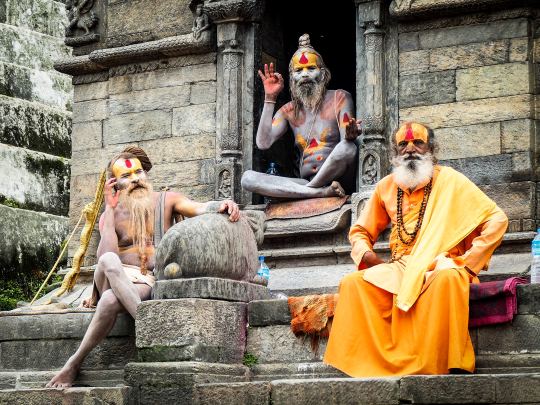
Sadhu Babas in Pashupatinath are ascetics who live a simple and spiritual life in the temple complex. Their unique appearance and spiritual practices attract visitors seeking their blessings and guidance.
#sadhubaba#pashupatinath#ascetics#spirituallife#blessings#guidance#hindusim#visitnepal#explorenepal#discovernepal#marveltreks.com#hiddengems#peacefullife#medition#religious#temple#positiviy
1 note
·
View note
Photo
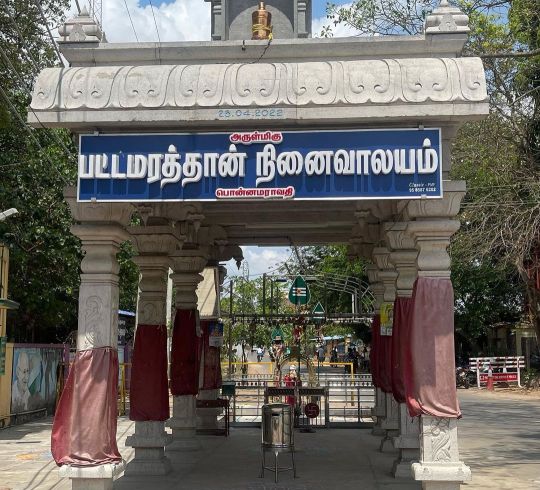
Divine blessings from our native Gods 🙏 #randomclicks #spirituallife (at Pattamarathan Kovil) https://www.instagram.com/p/CqPbeoup09rZwDdXbtXU_v0yPxuD4ESZ-jViZg0/?igshid=NGJjMDIxMWI=
0 notes
Text
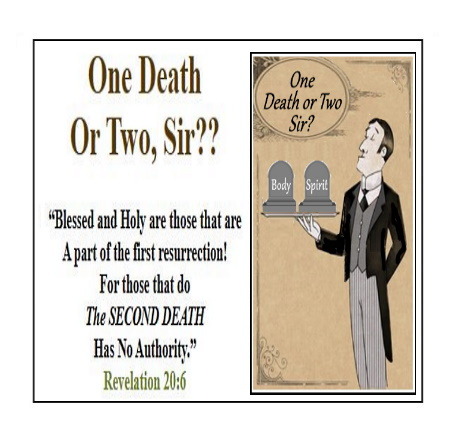
I hate to break it to you, but one day we are all going to die, but here’s something you may not of thought of before.
When you come into this world, your SOUL is united with your BODY and after living a (hopefully long life) one day your body will die and at that point your soul will then be separated from your body. This physical death is what the Bible calls 'The First Death,' but the question is - what THEN happens to your SOUL?
The Bible teaches at death that your soul will go one of two places. If you are “in Christ” it will go directly to be with God, and you will not die again or face condemnation. However if you are NOT in Christ, your soul will be separated from God and you will wait in hell until the end of time, and at that point will be judged for your sins and faced a self-imposed condemnation where you will go into “..the Lake of Fire.” This is the SECOND DEATH - the death of your soul - but a death that will never end and continue for all eternity.
Wow!! That message is really brutal! … and YES it is, and perhaps the most harsh word I have ever written, but before you get angry at me, THIS IS WHAT THE BIBLE SAYS, but here is the GOOD NEWS and the Truth!
You have been offered an acquittal - a full pardon for everything you’ve ever done wrong or evil in your life. There is no reason why you or anyone should experience a 'Second Death!' It is entirely up to you to believe or NOT BELIEVE what the Bible says, so if you have read this far, here is the conclusion of the matter.
Either:
A) You will believe God’s offer of forgiveness,
believe what His Word says in the Bible about avoiding
this second death and take His offer of deliverance from this Second Death
-or-
B)You will come to your own conclusion that this is some stupid,
superstitious, imaginary religious fairy tale not worth your consideration.
It is going to be one or another, but either way it is YOUR CHOICE.
Friend, THIS IS SERIOUS. You really do have a soul that will live forever, and YOU have a CHOICE how many DEATHS you believe you’ll have.
WILL IT BE ONE DEATH OR TWO?
God Bless Your Day
Jesus Loves You
NotesOnLife.org
Read over 700 other messages like this at NotesOnLife.org/archive
#life#mortallife#spirituallife#spiritualdeath#onebirth#onedeath#twodeaths#eternallife#notesonlife#getnotesonlife#lifenotes
0 notes
Photo

#spiritual #spirituality #spiritualawakening #spiritualgrowth #SpiritualJourney #spiritualgangster #spiritualquotes #spiritualhealing #SpiritualWarfare #spiritualcoach #spiritualpath #spiritually #spiritualit #spiritualart #spiritualwarrior #spiritualism #spiritualist #spiritualguidance #spiritualLife #spiritualteacher #spiritualbeing #spiritualthoughts #spiritualjewelry #spiritualbeings #spiritualpractice #spiritualhealth #spiritualjunkie #spiritualdevelopment #spiritualentrepreneur #spiritualrevolution (at Homestead, Miami. FL) https://www.instagram.com/p/Civ-0HRsuXc/?igshid=NGJjMDIxMWI=
#spiritual#spirituality#spiritualawakening#spiritualgrowth#spiritualjourney#spiritualgangster#spiritualquotes#spiritualhealing#spiritualwarfare#spiritualcoach#spiritualpath#spiritually#spiritualit#spiritualart#spiritualwarrior#spiritualism#spiritualist#spiritualguidance#spirituallife#spiritualteacher#spiritualbeing#spiritualthoughts#spiritualjewelry#spiritualbeings#spiritualpractice#spiritualhealth#spiritualjunkie#spiritualdevelopment#spiritualentrepreneur#spiritualrevolution
3 notes
·
View notes